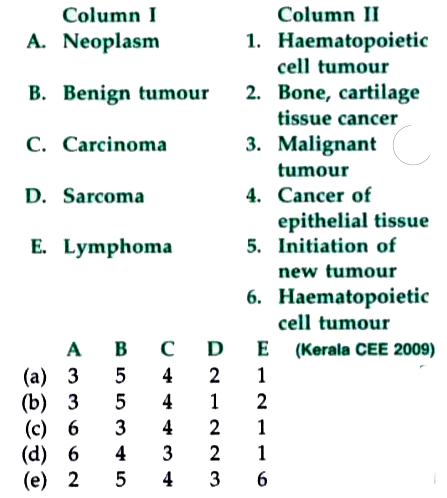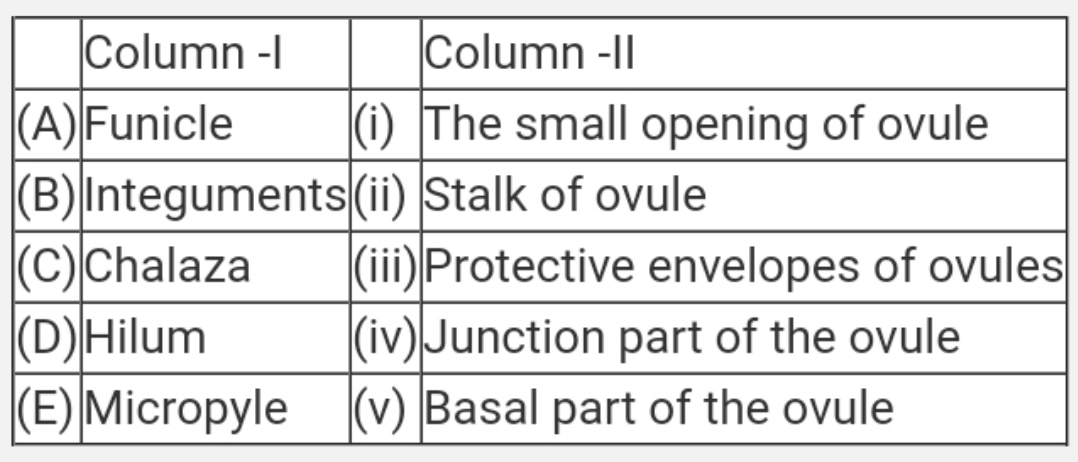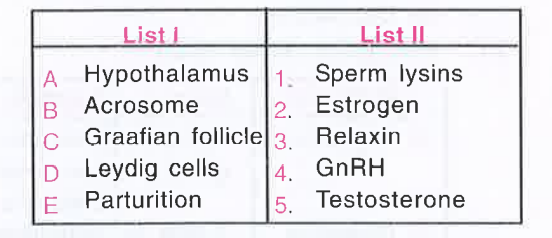Decomposers like fungi and bacteria are:
i. autotrophs ii. heterotrophs
iii. saprotrophs iv. Chemo-autotrophs
Choose the correct answer:
I and iii
I and iv
ii and iii
I and ii
The correct Answer is:c
Step-by-Step Solution:
1. Understanding Autotrophs:
- Autotrophs are organisms that can produce their own food using inorganic substances. They do not rely on other organisms for nutrition. Examples include plants and some bacteria that perform photosynthesis or chemosynthesis.
Hint: Remember that autotrophs are self-sufficient in food production.
2. Understanding Heterotrophs:
- Heterotrophs are organisms that cannot produce their own food and depend on other organisms for nutrition. This includes animals, fungi, and many bacteria.
Hint: Heterotrophs rely on other organisms for their energy and nutrients.
3. Understanding Saprotrophs:
- Saprotrophs are a specific type of heterotroph that feed on dead organic matter. They play a crucial role in decomposition and nutrient cycling in ecosystems. Fungi are classic examples of saprotrophs.
Hint: Saprotrophs specifically deal with decomposing dead material.
4. Understanding Chemo-autotrophs:
- Chemo-autotrophs are a subset of autotrophs that obtain energy by oxidizing inorganic substances, using that energy to synthesize organic compounds. They are not relevant to fungi and bacteria in the context of decomposition.
Hint: Chemo-autotrophs are not dependent on organic matter; they use chemicals for energy.
5. Identifying the Correct Answer:
- Since fungi and bacteria are involved in the decomposition process, they primarily feed on dead organic matter, making them saprotrophs. Additionally, they are also heterotrophs because they depend on other organic matter for their nutrition.
Conclusion: The correct answer is that decomposers like fungi and bacteria are ii. heterotrophs and iii. saprotrophs.
Final Answer:
- ii. heterotrophs
- iii. saprotrophs
- Autotrophs are organisms that can produce their own food using inorganic substances. They do not rely on other organisms for nutrition. Examples include plants and some bacteria that perform photosynthesis or chemosynthesis.
- Heterotrophs are organisms that cannot produce their own food and depend on other organisms for nutrition. This includes animals, fungi, and many bacteria.
- Saprotrophs are a specific type of heterotroph that feed on dead organic matter. They play a crucial role in decomposition and nutrient cycling in ecosystems. Fungi are classic examples of saprotrophs.
- Chemo-autotrophs are a subset of autotrophs that obtain energy by oxidizing inorganic substances, using that energy to synthesize organic compounds. They are not relevant to fungi and bacteria in the context of decomposition.
- Since fungi and bacteria are involved in the decomposition process, they primarily feed on dead organic matter, making them saprotrophs. Additionally, they are also heterotrophs because they depend on other organic matter for their nutrition.
- ii. heterotrophs
- iii. saprotrophs
Topper's Solved these Questions
- BOOK - NCERT EXEMPLAR ENGLISHCHAPTER - ECOSYSTEMEXERCISE - Very Short Answer Type Question19videos
ECOSYSTEM
- BOOK - NCERT EXEMPLAR ENGLISHCHAPTER - ECOSYSTEMEXERCISE - Short Answer Type Question16videos
ECOSYSTEM
- BOOK - NCERT EXEMPLAR ENGLISHCHAPTER - BIOTECHNOLOGY PRINCIPLES AND PROCESSEXERCISE - All Questions44videos
BIOTECHNOLOGY PRINCIPLES AND PROCESS
- BOOK - NCERT EXEMPLAR ENGLISHCHAPTER - ENVIRONMENTAL ISSUES EXERCISE - Long Answer Type Questions7videos
ENVIRONMENTAL ISSUES
Similar Questions
Knowledge Check
- Question 1 - Select One
The mode of nutrition in Kingdom Fungi is mainly
(a) autotrophic
(b) heterotrophic
(c) saprophytic
(d) parasiticAautotrophicBheterotrophicCsaprophyticDparasitic
Match the column I and II and choose the correct answer.
 View Solution
View SolutionAre chemosynthetic bacteria autotrophic or heterotrophic ?
View SolutionMatch column I with column II and choose the correct answer.
 View Solution
View SolutionMatch the column I, II and III to select the correct answer
 View Solution
View SolutionMatch the columns I, II and III. Choose the correct option.
 View Solution
View SolutionMatch between column I and column-II and choose the correct answer ?
 View Solution
View SolutionMatch the items in column-I with those in column-II and choose the correct answer
 View Solution
View Solution


